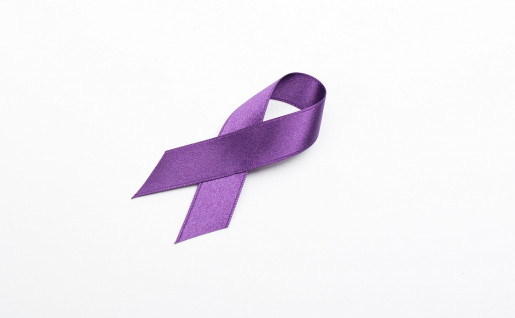Pancreatic cancer awareness: Six facts you need to know
Like many, I was saddened to hear of the passing of Alex Trebek, long-time host of the iconic game show, Jeopardy. Trebek recently died of pancreatic cancer, a disease that will impact more than 57,000 Americans in 2020 alone.
In honor of Pancreatic Cancer Awareness Month, which is recognized in November, here are some facts about pancreatic cancer that you need to know.
What is the pancreas?
The pancreas is one of our vital organs. Roughly the size and shape of a small trout, it lies deep in our upper abdomen snuggled between the duodenum and liver on the right and the spleen on the left. It is a workhorse for our digestive system making important enzymes that flow into the duodenum to help break down proteins, sugars, and fats in our food.
How common is pancreatic cancer?
The most common form of pancreatic cancer is called “adenocarcinoma.” This cancer comprises only 2% of all cancers, but when it happens, it usually goes a long time without being noticed or causing symptoms, so it is difficult to diagnose early. Many times, it is Stage 3 or 4 when it is diagnosed. In 2018, it was the third most common cause of cancer related death, but in 2020, it may out pace colon cancer to become the second most common.
What are the symptoms?
Symptoms are usually vague and shared by many other non-cancer causes:
- Unexplained weight loss or fatigue
- Nausea, vomiting, loss of appetite
- Painless yellowing of the skin (jaundice) or eyes (icterus)
- Non-specific abdominal pain or pain in the upper abdomen that may radiate to the back
- New onset of diabetes at a later age, 45 years old or older
- Diarrhea and floating stools
How is it diagnosed?
There are several ways to diagnose pancreatic cancer. Here are the most common.
- CT scan of the abdomen with pancreatic protocol: In this test, radiologists use a special technique called IV contrast to ‘see’ the pancreatic tumor. Sometimes patients find out they have a mass in the pancreas from a CT done for something else in the body.
- ERCP (endoscopic retrograde cholangiopancreatography) and EUS (endoscopic ultrasound): These are procedures done by GI specialists. Both procedures make use of a long winding, flexible instrument that has a camera and is placed through the mouth and down the esophagus, stomach, and duodenum to evaluate the pancreas and many of the nearby drainage tubes. The GI doctors look directly at the inner lining of these structures and many times ‘see’ the pancreatic tumor so they can take little pieces of tissue (called a biopsy), which can be sent to the lab for analysis with a microscope.
- CA19-9: Carbohydrate antigen 19-9 is a complex molecule in the blood that is called a “tumor marker.” It is often checked early in the diagnosis of pancreatic cancer by getting a blood sample from the patient. Later, after the pancreatic cancer is treated, the CA19-9 levels are checked periodically and if they are going up, it indicates that cancer might be coming back.
- Diagnostic laparoscopy: This is a short operation done under general anesthesia in which surgeons use a camera through a small incision, usually made at the belly button area, to look around inside the abdomen for little bits of tumor that might be in the abdominal cavity.
How is it treated?
Chemotherapy is the most common way to treat most pancreatic cancers, followed by surgery and sometimes radiation. Since most pancreatic cancer is found in advanced stages, chemotherapy is effective for doing damage or killing these cells wherever they are in the body.
Chemotherapy will often make tumors smaller and “loosen their grip” on surrounding structures like blood vessels to make it possible for the surgeon to operate and remove the primary or main tumor.
Can it be treated surgically?
The easy way to say the name of the operation to remove pancreatic cancer is “The Whipple.” The hard way to say it is “pancreatoduodenectomy.” This operation is one of the most complex operations that exists. It usually takes six or more hours and requires four to seven days in the hospital to recover. It is the most common surgery for pancreatic cancer.
Pancreatic cancer, like many other forms of cancer, can be difficult to treat. But patients can be confident there are teams of providers at many top-rate institutions who are well-trained and ready to guide them in the choices they make and the experiences patients and their families go through.
Additional resources
Learn more about pancreatic cancer treatment at Baylor College of Medicine or call (713) –798–2262.
See more information about World Pancreatic Cancer Day.
-By Brian Lassinger, M.S., M.L.S., instructor in the Division of Surgical Oncology in the Michael E. DeBakey Department of Surgery at Baylor College of Medicine




